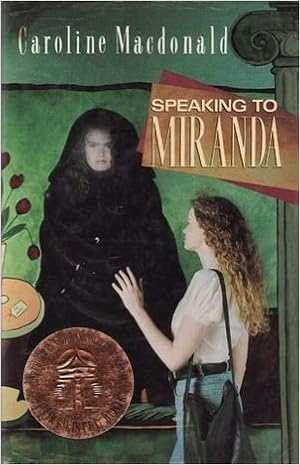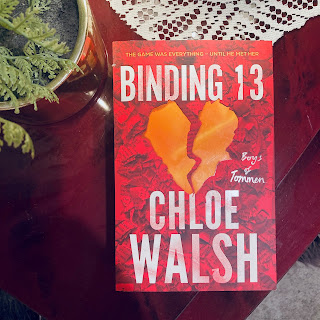Review: Speaking to Miranda by Caroline MacDonald
Speaking to Miranda is a haunting tale of a young woman's search to learn more about her dead mother. Published in 1990 (and later short-listed as a CBBA book for older readers,) the novel is set in 1986 and touches on topics that were relevant for the era that the novel was set, in particular what life is like for those who were born in the 1960s as the children of hippies. Ruby is an intelligent young woman, who has lived in many parts of Australia, and has no close friends, apart from her adoptive father, Rob. She does, however, have an imaginary friend called Miranda who will speak to her on occasions and often, Miranda isn't very nice. Apparently, Miranda gained her name when Ruby was just small and people would see her talking to herself whilst sitting inside pram that was decorated with wildflowers. Ruby's mother, Emma would explain to people that Ruby was "Speaking to Miranda."
Ruby's mother, Emma, was a mysterious hippie-like young woman who died when Ruby was just two, and that is all that is known about her. Ruby has been raised by Emma's partner, Rob, who refuses to speak about her in any detail and most of what Ruby knows comes from her Gran, Rob's mother. And she knows nothing apart from the fact that Rob and Emma met at the beach one day and fell in love almost instantly. Now that Ruby has come of age and it look as though Rob may be marrying the repulsive Evie, she feels that the time has come for her to learn more about her mother. She begins a search that takes her Darwin, to Melbourne and eventually to New Zealand, where some surprising truths are eventually revealed, including the real identity of Miranda ...
This novel was enjoyable, though some of the threads do not tie in together as well as they should--for example there are some inconsistencies about when, and why, Ruby started "speaking to Miranda." (Sadly, the novel never quite makes up its mind whether or not to embrace some of the supernatural themes. A logical explanation is given, however, that explanation discounts the fact that Ruby started speaking to Miranda before her mother died.) For contemporary audiences, this novel also feels very dated and there isn't a lot of detail about the era that it is set--Australia and New Zealand in the 1980s--and some details may leave readers feeling a little lost, for example how was Rob so easily able to adopt Ruby without learning Emma's true identity, and why Emma was able to travel between New Zealand and Australia without a passport. And so much for that cloak being a classic design that never goes out of fashion ...
The ending is a strange one, with Ruby making some important discoveries, most notably, how her mother became such a free spirit and made the choices that she did. A new identity and life in New Zealand also paves the way for the possibility that her relationship with Rob may change, which is well, rather a surprise. (SPOILER ALERT: Neither seem able to hold successful romantic relationships as they seem to be bound to each other, and Ruby's true identity means that she is not, in fact, the child that Rob adopted many years before.)
Although this could have been longer, the novel is enjoyable as it is. Recommended, though this one is not necessarily destined to become a modern classic.
This book was read as part of the Aussie Author Challenge 2016.




Comments